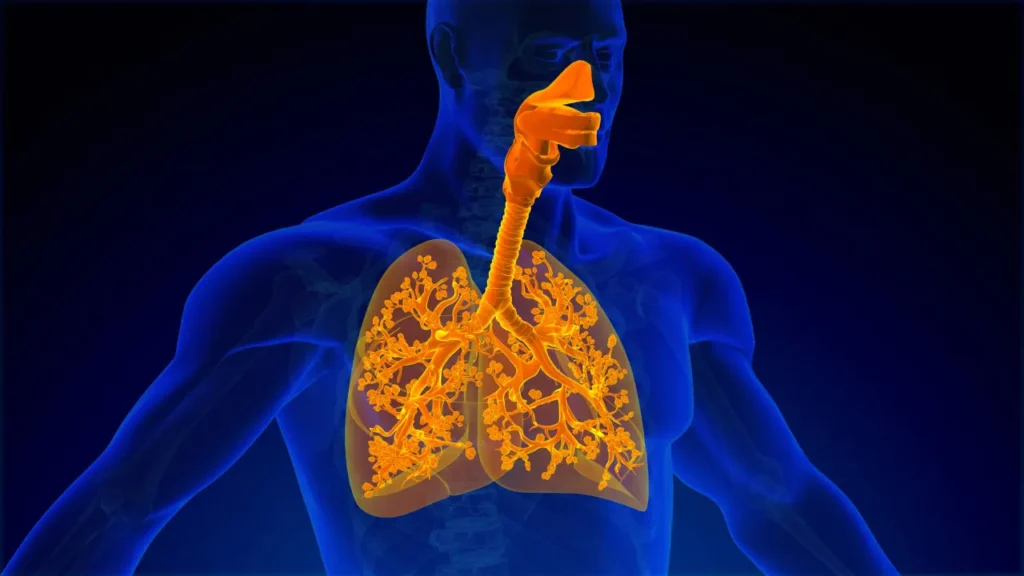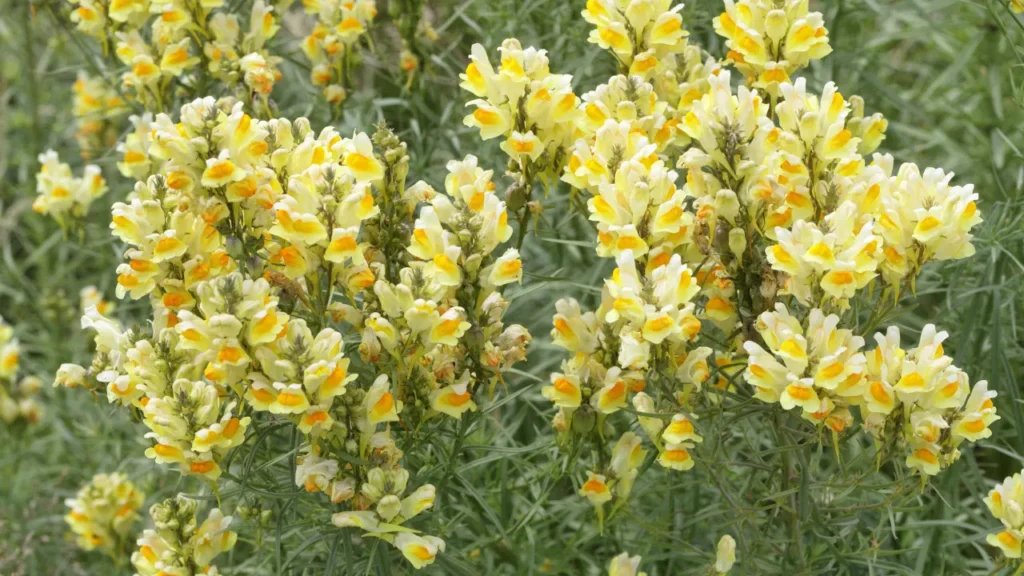Linaria vulgaris, a perennial herbaceous plant indigenous to Europe and Asia, has been used in traditional medicine for centuries. The nutritional supplement has garnered the attention of researchers due to its varied health benefits, resulting in a growing body of scientific evidence supporting its usage. The objective of this article is to investigate the characteristics of Yellow Toadflax, its potential health advantages, recommended dosage, adverse effects, possible interactions with other substances, and other pertinent details to ensure the prudent utilization of this supplement.
You May Also Like:
Sunmed CBD vs. Partnered Process CBD: Finding the Best CBD for Sleep
Tarragon: Benefits, Dosage, Side Effects, Drug Interactions, And Other Important Information
Yellow Toadflax: Benefits, Dosage, Side Effects, Drug Interactions, And Other Important Information is an original (NootropicsPlanet) article.
Nature of Yellow Toadflax
The yellow toadflax, also called butter-and-eggs or common toadflax, belongs to the Plantaginaceae family. The plant’s distinctive features include slender, erect stems, linear leaves, and yellow snapdragon-like flowers. Its medicinal properties have been utilized for the treatment of diverse ailments, including digestive disorders, skin conditions, and respiratory issues.
Health Benefits of Yellow Toadflax
Traditional medicine has utilized yellow toadflax to cure various illnesses like respiratory, skin, and digestive issues. As a dietary supplement, yellow toadflax has been linked to the following health advantages:
Internal Health
Yellow toadflax contains iridoid glycosides, which have laxative effects that help cure constipation and encourage regular bowel movements. Irritable bowel syndrome (IBS) and inflammatory bowel disease (IBD) may benefit from the plant’s anti-inflammatory effects, which also aid in reducing gastrointestinal inflammation.
Skin Care
Yellow toadflax contains antioxidant and anti-inflammatory flavonoids and phenolic acids that may help treat a variety of skin disorders. The herb has been applied topically to treat dermatitis, psoriasis, and eczema. Due to its antibacterial qualities, it is also a potent treatment for minor skin infections, wounds, and cuts.
Respiratory Fitness
Historically, yellow toadflax has been used as an expectorant to treat respiratory conditions like bronchitis and asthma. Its expectorant activity removes mucus and other irritants, while its anti-inflammatory qualities can help reduce inflammation in the respiratory tract.
Properties that fight cancer and free radicals
Yellow toadflax contains antioxidant and anti-cancer flavonoids, making it a promising candidate for cancer treatment and prevention. Studies have shown that yellow toadflax extract can cause specific cancer cells to undergo apoptosis (cell death) and slow tumor growth.

Chemistry of Yellow Toadflax
Yellow toadflax has a potent phytochemical composition containing flavonoids, iridoid glycosides, alkaloids, and phenolic acids, contributing to its medicinal benefits. These bioactive ingredients cause the plant’s many health advantages.
The broad class of plant metabolites known as flavonoids is renowned for its anti-inflammatory, anti-cancer, and antioxidant activities. Iridoid glycosides such as linarioside and antirrhinoside aid the plant’s laxative and anti-inflammatory properties. While phenolic acids like caffeic acid and chlorogenic acid have anti-inflammatory and antioxidant activities, alkaloids like peganine have antibacterial and antioxidant properties.
Physiological Mechanisms of Action
The bioactive substances found in yellow toadflax, such as flavonoids, iridoid glycosides, alkaloids, and phenolic acids, contribute to its health advantages through various physiological modes of action. This section examines the mechanisms connected to these chemicals in yellow toadflax.
Flavonoids
The capacity of flavonoids to scavenge free radicals and chelate metal ions, which can produce reactive oxygen species (ROS) that cause oxidative damage, is credited with giving them antioxidant qualities. Flavonoids’ anti-inflammatory properties result from their capacity to prevent the synthesis of pro-inflammatory mediators such as prostaglandins, leukotrienes, and cytokines. The ability of flavonoids to influence several signaling pathways involved in cell development, differentiation, and apoptosis is linked to their anti-cancer characteristics. This ability results in the prevention of tumor growth and the activation of cancer cell death.
Glycosides of iridium
Iridoid glycosides, including linarioside and antirrhinoside, have laxative and anti-inflammatory effects. They stimulate the smooth muscle cells in the intestines, increasing peristalsis and easing bowel motions. By preventing the generation of pro-inflammatory mediators, they also aid in reducing gastrointestinal inflammation.
Alkaloids
Peganine, an alkaloid found in yellow toadflax, is an antioxidant with antibacterial characteristics. Their ability to damage bacterial cell walls and obstruct vital biological functions like protein synthesis and DNA replication gives them antibacterial properties. The ability of alkaloids to neutralize free radicals gives them their antioxidant effects, which shield cells and tissues from oxidative harm.
Acids Phenolic
Phenolic acids, such as caffeic acid and chlorogenic acid, have anti-inflammatory and antioxidant characteristics. Their antioxidant characteristics come from their capacity to combat free radicals and chelate metal ions while suppressing pro-inflammatory mediators, which brings about their anti-inflammatory impact.
In conclusion, yellow toadflax offers a wide variety of health advantages due to its bioactive components’ physiological modes of action. It is a beneficial dietary supplement because it combines flavonoids, iridoid glycosides, alkaloids, and phenolic acids with antioxidant, anti-inflammatory, laxative, antibacterial, and anti-cancer qualities.

Optimal Dosage of Yellow Toadflax
Yellow toadflax is commonly sold as a dietary supplement in teas, tinctures, and capsules. The ideal yellow toadflax dosage may change according to the person’s age, weight, and health status. However, the following are general dosage recommendations:
- Tea: 1-2 teaspoons of dried yellow toadflax herb steeped in 8 ounces of hot water for 10-15 minutes, consumed twice to thrice daily.
- Tincture: Take 20-40 drops (1-2 mL) of yellow toadflax tincture, two to three times daily.
- Capsules: 250-500 mg of yellow toadflax extract, taken two to three times daily.
It’s crucial to remember that these are just basic recommendations and that there might be slight differences. Before beginning any new supplement regimen, especially for people with pre-existing diseases or those on medications, it is advisable to speak with a healthcare provider.
Side Effects of Yellow Toadflax
Yellow toadflax is generally considered safe when used in acceptable doses for brief periods. However, a few adverse effects have been noted, such as:
- Digestive discomfort: Yellow toadflax’s laxative effects, especially when ingested in excess, can cause cramps in the abdomen, diarrhea, and nausea in some people.
- Allergic reactions: Yellow toadflax can cause allergic reactions in some people, which include skin rashes, itching, and swelling.
Adhere to the suggested dosage recommendations to reduce the risk of side effects and seek medical advice if any adverse side effects develop.

Potential Substance Interactions with Yellow Toadflax
Certain drugs and yellow toadflax may interact, reducing the effectiveness or raising the risk of adverse consequences. Among the probable interactions are:
- Diuretics: When yellow toadflax and diuretics are used together, potassium loss may rise, increasing the risk of electrolyte abnormalities.
- Anticoagulants: Yellow toadflax may impair the effects of anticoagulant drugs like warfarin, increasing the risk of bleeding.
- Laxatives: When taken with other laxatives, yellow toadflax may cause gastrointestinal adverse effects, including cramps and diarrhea, or worse.
To avoid potential interactions, those using any drugs should speak with a healthcare provider before beginning yellow toadflax intake.
Best Responsible Uses of Yellow Toadflax
The following responsible use instructions must be followed to get the best results from yellow toadflax supplementation:
- Before beginning yellow toadflax supplementation, speak with a medical expert, especially if you have any pre-existing problems or are taking medication.
- Follow the dosage recommendations to reduce the risk of side effects, stop using the product, and speak with a doctor if any adverse symptoms appear. Because the safety of yellow toadflax during nursing and pregnancy has not been thoroughly established, pregnant women and lactating mothers should avoid taking it.
Yellow Toadflax:
Conclusion
Yellow toadflax has been traditionally used in herbal medicine for its purported medicinal properties, including as a digestive aid and diuretic, and for treating skin conditions like eczema and wounds. Despite its traditional use, there is limited scientific evidence to support the health benefits of yellow toadflax. Few studies have been conducted to evaluate its efficacy and safety in humans. While yellow toadflax is generally considered safe when used in moderation, there are potential safety concerns. Some compounds in the plant may be toxic in large quantities, and allergic reactions are possible in sensitive individuals. Individuals interested in using yellow toadflax for medicinal purposes should consult a healthcare professional and exercise caution.

References:
- Yellow Toadflax (Linaria vulgaris) – Phytochemical Composition, Antioxidant Activity, and Health Benefits, and then link: https://www.sciencedirect.com/science/article/abs/pii/S1049964406003215
- Pharmacological Activities of Linaria vulgaris, and then link: https://www.researchgate.net/publication/320012260_Pharmacological_Activities_of_Linaria_vulgaris_A_Review
- Traditional and Modern Uses of Yellow Toadflax (Linaria vulgaris): A Comprehensive Overview, and then link: https://www.academia.edu/37950998/Traditional_and_modern_uses_of_yellow_toadflax_Linaria_vulgaris_A_comprehensive_overview
- Yellow Toadflax (Linaria vulgaris) as a Medicinal Herb: A Review of its Pharmacological Properties, and then link: https://www.researchgate.net/publication/327583460_Yellow_Toadflax_Linaria_vulgaris_as_a_Medicinal_Herb_A_Review_of_its_Pharmacological_Properties
Important Note: The information contained in this article is for general informational purposes only, and should not be construed as health or medical advice, nor is it intended to diagnose, prevent, treat, or cure any disease or health condition. Before embarking on any diet, fitness regimen, or program of nutritional supplementation, it is advisable to consult your healthcare professional in order to determine its safety and probable efficacy in terms of your individual state of health.
Regarding Nutritional Supplements Or Other Non-Prescription Health Products: If any nutritional supplements or other non-prescription health products are mentioned in the foregoing article, any claims or statements made about them have not been evaluated by the U.S. Food and Drug Administration, and such nutritional supplements or other health products are not intended to diagnose, treat, cure, or prevent any disease.


